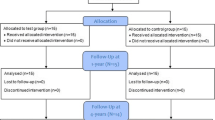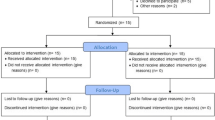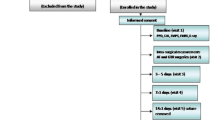Abstract
The goal of this investigation was to evaluate the effect of postoperative exposure of two different bioresorbable membranes on the guided tissue regeneration (GTR) healing results compared to nonexposed sites. In each of 25 patients one pair of contralateral intrabony lesions was treated either with polylactic acid (PLA) or polyglactin 910 (PG-910) membranes. Postoperative exposure occurred in 9 PLA and 13 PG-910 sites. Standardized clinical [papillary bleeding index (PBI), gingival recession (REC), probing pocket depth (PPD), probing attachment level (PAL)] and radiographic examinations (digital subtraction radiography) were performed immediately before (baseline) and 6 and 12 months postoperatively (p.o.). Subgingival bacterial samples from surgical sites were evaluated by culture at baseline, 6 weeks, and 6 and 12 months p.o. Six months after surgery the changes (Δ) of REC were significantly (P≤0.05) greater in exposed than in nonexposed sites, independently of the membrane material (median): exposed sites, ΔREC=–1 mm; nonexposed sites, ΔREC=0.0 mm. However, 12 months p.o. no significant differences were found due to a decrease in the initial recessions in exposed sites. Although a higher percentage of exposed than nonexposed sites harbored periodontal pathogens 6 weeks p.o. at the gingiva-faced membrane surface, membrane exposure did not have a significant negative effect on ΔPPD, ΔPAL, or radiographic bone density changes 6 and 12 months p.o. Both membranes showed significant gains in PAL and bone density in both exposed and nonexposed sites. In conclusion, this study demonstrates that with consistent infection control the postoperative exposure of PLA and PG-910 membranes has no significant negative effect on the regeneration outcome, although higher initial gingival recessions must be expected than in the nonexposed sites. However, in exposed sites plaque and infection control were clearly impeded by the rough, exposed membrane surfaces and by the initially negative gingival morphology.
Similar content being viewed by others
Author information
Authors and Affiliations
Additional information
Received: 22 January 1997 / Accepted: 5 May 1997
Rights and permissions
About this article
Cite this article
Christgau, M., Bader, N., Schmalz, G. et al. Postoperative exposure of bioresorbable GTR membranes: effect on healing results. Clinical Oral Investigations 1, 109–118 (1997). https://doi.org/10.1007/s007840050021
Issue Date:
DOI: https://doi.org/10.1007/s007840050021




